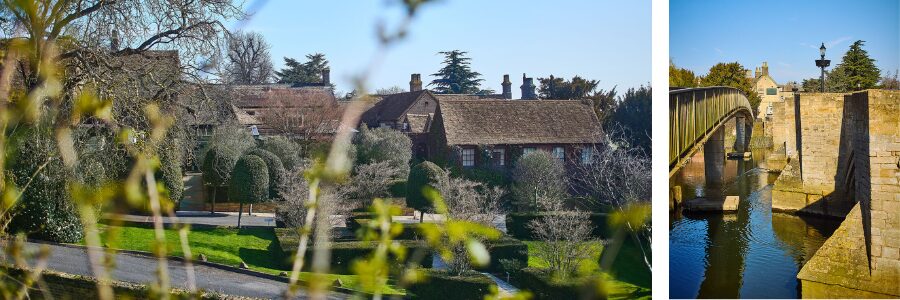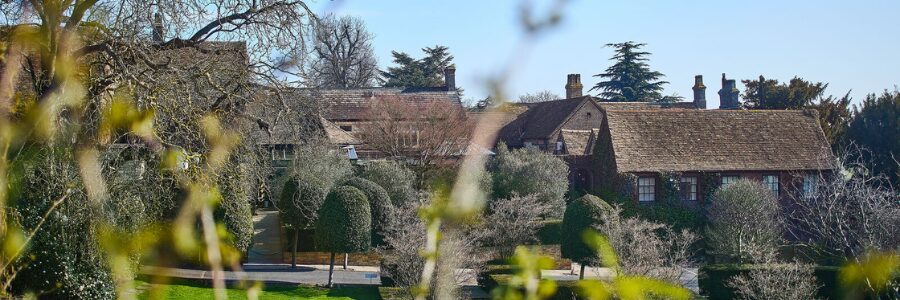The Old Bridge has stood beside the Great Ouse in one form or another for centuries, long before it was ever a hotel, or even called The Old Bridge.
The land itself appears in records from 1572, once home to a property known as ‘Coxlands’. In the 17th century, it was replaced with a fine townhouse that would come to play a central role in local life. By the 1800s, it belonged to the Veasey family – prosperous merchants whose name appears throughout Huntingdon and Godmanchester history. With a background in milling and construction, they expanded into coal, timber, stone and, eventually, banking and wine.
Bridge House, as it was then known, was both home and headquarters. The family operated their business from riverside warehouses at the back, charging tolls on coal and materials unloaded from the wharfs. By the mid-19th century, they had added grander living spaces and garden rooms to the house, reflecting their rising stature. At one point, their reach extended across town – from banking on Market Hill to a wine and spirits business under the very same roof you can now dine beneath.
By the late 1800s, the family had moved on and Bridge House began a new chapter. It briefly became a school for girls, and then a retirement home for a local alderman. When the nearby Fountain Hotel closed in 1912, the need for more accommodation in Huntingdon grew, and so, in 1919, Bridge House officially became a hotel under the stewardship of Captain H.C. Roberts, a decorated veteran of the First World War.
Over the following decades, the building changed hands several times. Rooms were added. Gardens were lost to the construction of the ring road in the 1960s. In 1994, John and Julia Hoskins took over, starting a new chapter that saw the creation of the wine shop, riverside meeting rooms and peaceful terraces – and a return to the kind of hospitality the house was built for.
Today, The Old Bridge is part of the Chestnut family. While the surroundings continue to evolve, the spirit remains the same – thoughtful, warm, and full of quiet character. The building may have shifted in name and purpose, but it’s always been a place of gathering, of enterprise, of welcome. And still is.


